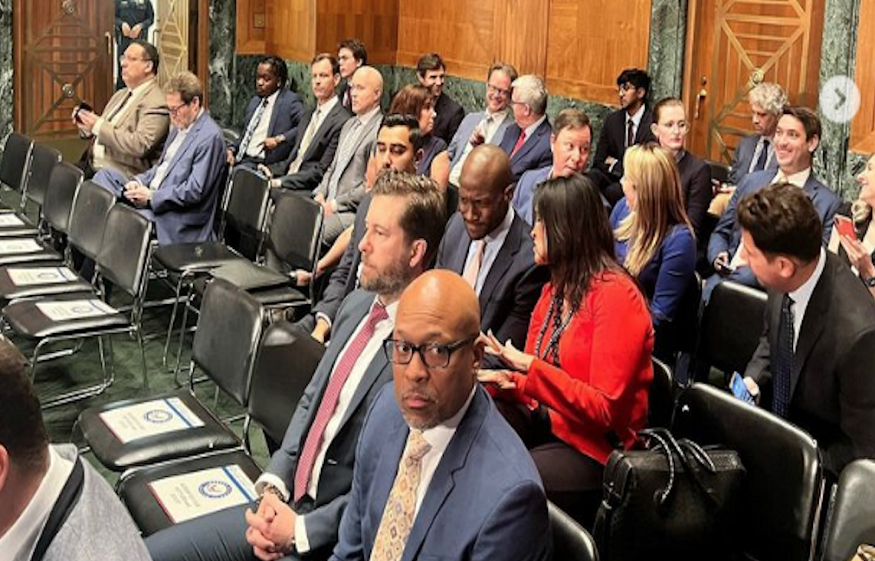Once, the banking sector ran to the beat of policy changes and interest rates. Today, however, it beats with real-time threat detection, encrypted communications, and lines of code. One change that resonated stronger than ever at the core of the biggest banking technology conference of the year was the rise of cybersecurity as a strategic objective rather than as a compliance tick. Financial organisations rushing to modernise reveal what is increasingly obvious: the new battlefield for trust is in bytes, not in branches.
1.Cybersecurity Is No Longer a Supporting Act
For years, cybersecurity specialists worked silently in the background, data protectors seldom in the limelight. That changed this year. Every keynote and seminar was led by one reality: security is now fundamental to financial innovation. Cybersecurity is not simply a department as fraud becomes more sophisticated and consumer data more precious. It drives brand strategy, infrastructure, and product choices.
2. Real-time Threat Detection is Now Required
Threat detection can’t afford to lag with banking becoming completely digital and transactions occurring in milliseconds. Throughout the meeting, a common topic was artificial intelligence-driven monitoring systems spotting real-time irregularities. Shifting from batch-based warnings and periodic audits, banks are using continuous monitoring systems that notify fraud as it occurs rather than after.
3. The Weakest Link Is Human Error
Among all the discussion about cutting-edge technologies, a clear message emerged: many clicks trigger the largest violations. Phishing, social engineering, and credential theft remain top threat vectors. Not only firewalls but fire drills have been driven by this for banks to double down on internal training, simulated assaults, and zero-trust policies.
4. Regulations Are Getting Stricter; Smart Banks Are Getting Ahead
Compliance is no more a once-a-year chore with world authorities tightening requirements on breach reports, data localisation, and consumer privacy. Banks are incorporating compliance into the product lifecycle, baking it into development rather than stacking it on top. Not just a safety net but proactive alignment with standards like ISO 27001 and NIST is turning into a competitive advantage.
5. The New Currency Is Customer Trust
Trust has become intangible in a society replacing face-to-face contacts with digital wallets and mobile banking, but it is more vital than ever. The conference highlighted how banks are leveraging visible security features, customer-controlled privacy settings, and transparency tools to make cybersecurity a selling point rather than simply a protection.
6. Cloud Migration Requires Security That Is Cloud-Native
Banks are discovering outdated security systems don’t transfer as they speed their move to the cloud for scalability and flexibility. Among the most discussed subjects was cloud-native security—integrated, elastic, and adaptable. Institutions are reconsidering how to safeguard their assets in distributed, multi-cloud settings from container security to policy-as-code.
7. Ransomware Is Getting Smarter—So Are Defences
Ransomware assaults on financial institutions have grown in number and sophistication. Banks, however, are reacting with layered defence strategies—not just backups but also fraud technologies, forensic preparedness, and incident response war rooms. While prevention is crucial, the new measure of maturity is resilience—the capacity to rebound quickly.
8. Third-Party Risk Is Under the Microscope
Third-party ecosystems are growing from outsourced services to fintech alliances. But that brings exposure. A single weak connection may endanger a whole network. Banks are increasing vendor evaluations, real-time risk scoring, and contractual security responsibilities to guarantee their long digital supply chains are unbreakable, as covered in full.
9. Access and Identity Are Being Reimagined
Digital banking’s expansion makes the task of confirming who is who even more difficult. The floor is now multi-factor authentication, not the ceiling. The change is towards adaptive access—systems that change security depending on user behaviour, location, and device. Identity is dynamic, contextual, and intimately woven into consumer experience rather than fixed.
10. No Longer a Buzzword, Zero Trust
Once a conference cliche, “zero trust” was unpacked in actual terms. Even inside their own networks, banks are aggressively implementing systems assuming breach, verifying every contact, and removing implicit trust. Although difficult, this change in attitude is motivating redesigns of everything from infrastructure to staff access policies.
11. On the Radar: Quantum-Safe Cryptography
Although quantum computing can seem to be a remote danger, the need is genuine. Experts cautioned that data being taken now may be decoded tomorrow when quantum power becomes accessible. Forward-looking banks are already experimenting with quantum-resistant algorithms to future-proof critical data, reflecting security not just for today but for decades to come.
12. The New Gold Rush is Cybersecurity Talent
One silent catastrophe was the skill deficit. Banks are finding it difficult to draw and keep the appropriate skill set as cybersecurity becomes increasingly complicated. Projects like as internal upskilling, university collaborations, and AI-assisted security technologies are being investigated to close the gap; still, the rivalry remains strong.
13. Data Governance is Becoming Popular
Governing data responsibly now goes beyond just safeguarding it. That covers its usage, duration of storage, and access control. Banks are putting money into internal data ethics committees, privacy-by-design policies, and data lineage tools. Responsible data management is an ethical and reputational need in the age of artificial intelligence.
14. Incident Response is Being Simulated
Now included in daily planning is preparation for the worse. To get their executives and systems ready for actual assaults, banks are performing full-blown cyber simulations—red teaming, tabletop exercises, even cross-border threat drills. Response speed, role clarity, and communication protocols were emphasised as make-or-break elements.
15. Cyber Standards Are Being Aligned by Banks and Fintechs
From competition to cooperation, fintechs and conventional banks are beginning to agree on cybersecurity best practices. The sector is being improved cooperatively via shared frameworks, threat intel exchanges, and cooperative compliance methods. Digital finance’s expansion increases the need for a unified cyber front.
16. Boards Are Becoming Aware of Cyber
No longer hidden in IT presentations, cybersecurity is on boardroom agendas. Executives are funding governance systems, asking more pointed questions, and expecting quantifiable risk analysis. The top’s tone is changing; cyber is becoming a strategic problem affecting all businesses rather than a technical concern.
Conclusion
One thing this year’s conference made very evident is that contemporary cyber in banking is built on cybersecurity. It’s a strategic enabler, a trust-builder, and a competitive advantage, not just a defensive action. Banks that consider cyber as central rather than peripheral will be the ones shaping the future of finance as digital channels proliferate and dangers change. The vault is no longer just physical. It’s computerised, active, and constantly monitored.

